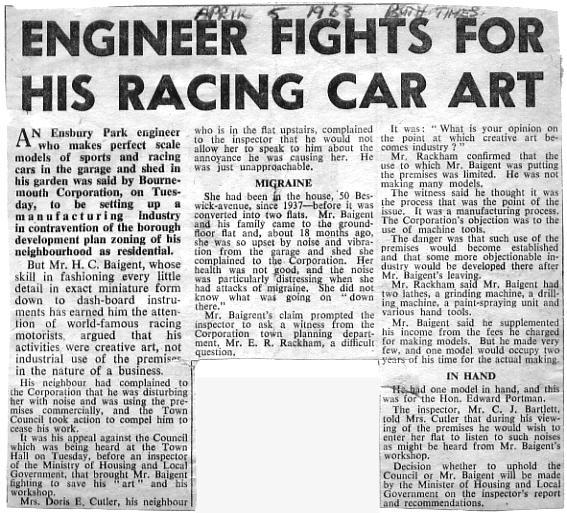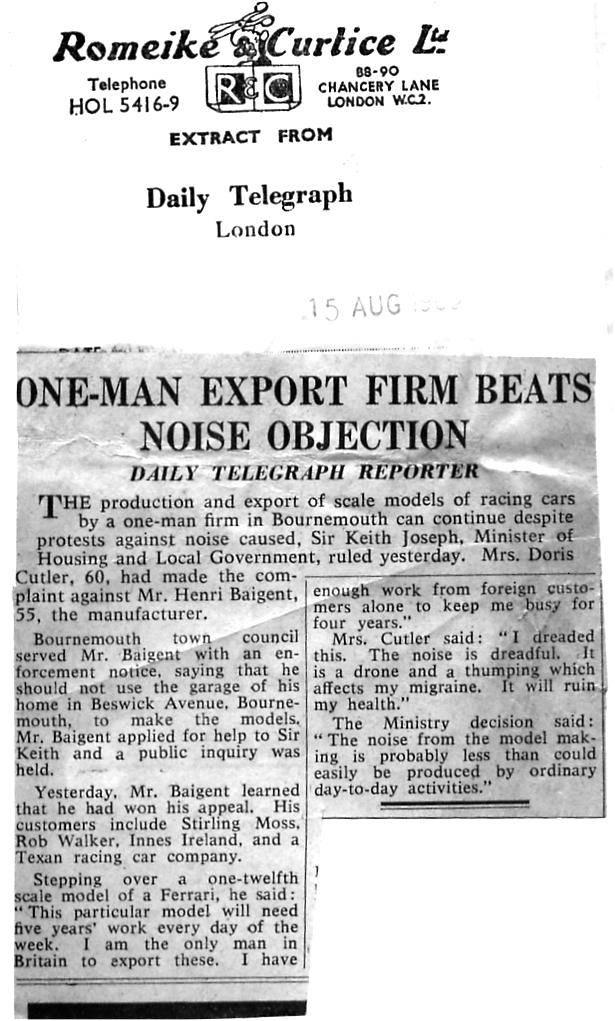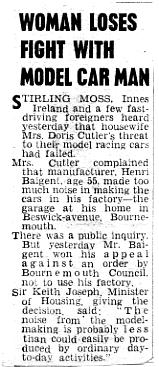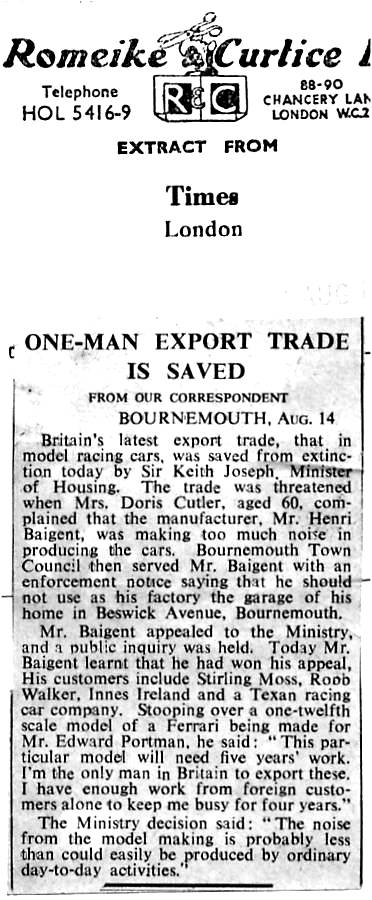
During Spring 1963, Henri's neighbour officially complained that he was making too much noise. She took her complaint to the Council, so they sent an inspector from the planning department to check whether her complaint was justified. The Council took Henri to Court and it ruled that Henri had to cease working in his workshop. I have included some press cuttings to tell most of the story.






Henri, who had everything to lose, appealed to the Minister of Housing and Local Government, at that time, Sir Keith Joseph. An inspector was sent to investigate, and to make a recommendation to a public enquiry. What really happened has not been told before, but it just shows what can be done to sway a court decision. It must be explained that Henri was not just doing modeling but designing, building, developing and testing a new type of full-size racing engine module, which in multi-unit form, he felt would be able to compete in full-size motor-racing! Before the inspector arrived from the Ministry to listen to the daily sound levels, Henri had hidden all traces of it away in a remote shed. When the inspector walked through the workshop back-door he was confronted with a few models and the magnificent full-sized Roesch-Talbot that Henri had just finished rebuilding. He was absolutely stunned. He immediately recognised it and became very interested in it. He was a true Talbot enthusiast! He chatted at length to Henri about Talbots, Henri was good at Talbot history, and so was the inspector. After that, the inspector discussed model-cars and asked Henri to run his machinery while he went to the neighbours flat to listen to the noise levels. The clearance for Henri to continue his work was given readily. Lucky Henri! The racing engine had to have a silencer (muffler) fitted, perhaps Henri should really have done that before! I only have second-hand knowledge of all this, so I can vouch for none of it! However, I do feel very sorry for the neighbour.
The racing engine that was being developed was extremely powerful, and very high revving for that era. Hamworthy Engineering of Poole offered financial support to install the prototype in a go-kart, but during testing the immense torque sheared off both the 1.25 inch diameter steel drive-shafts. With that Hamworthy withdrew their support. Henri asked 'Rob' Walker for help. He promised to make an effort to get finance for a new racing car to see what it would do, and failed. 'Tony' Rolt was asked, then Bristol Aero Engineering, all were very interested but declined to invest. It had variable-tuning disc reed-valves. The configuration was a single-cylinder opposed pistons with crank-case transfer of the fuel mixture, as in a two-stroke. It was respirated with a down-draft Weber carb. The con-rods were linked via a link mechanism to a common output shaft. Not much further development was done after the complaints against the noise because Henri could not afford to lose his modeling business unless the development of the engine was a sure-fire affair. When I cleared out Henri's workshop, after he died, I kept the engine in my garage for years intending to consider developing it, but I had more pressing things to do. Then one day, when I thought we were going to move out of the rented garage, I committed it to the council dump. Sackcloth and ashes be upon me. If only I had taken some details and photos of it!